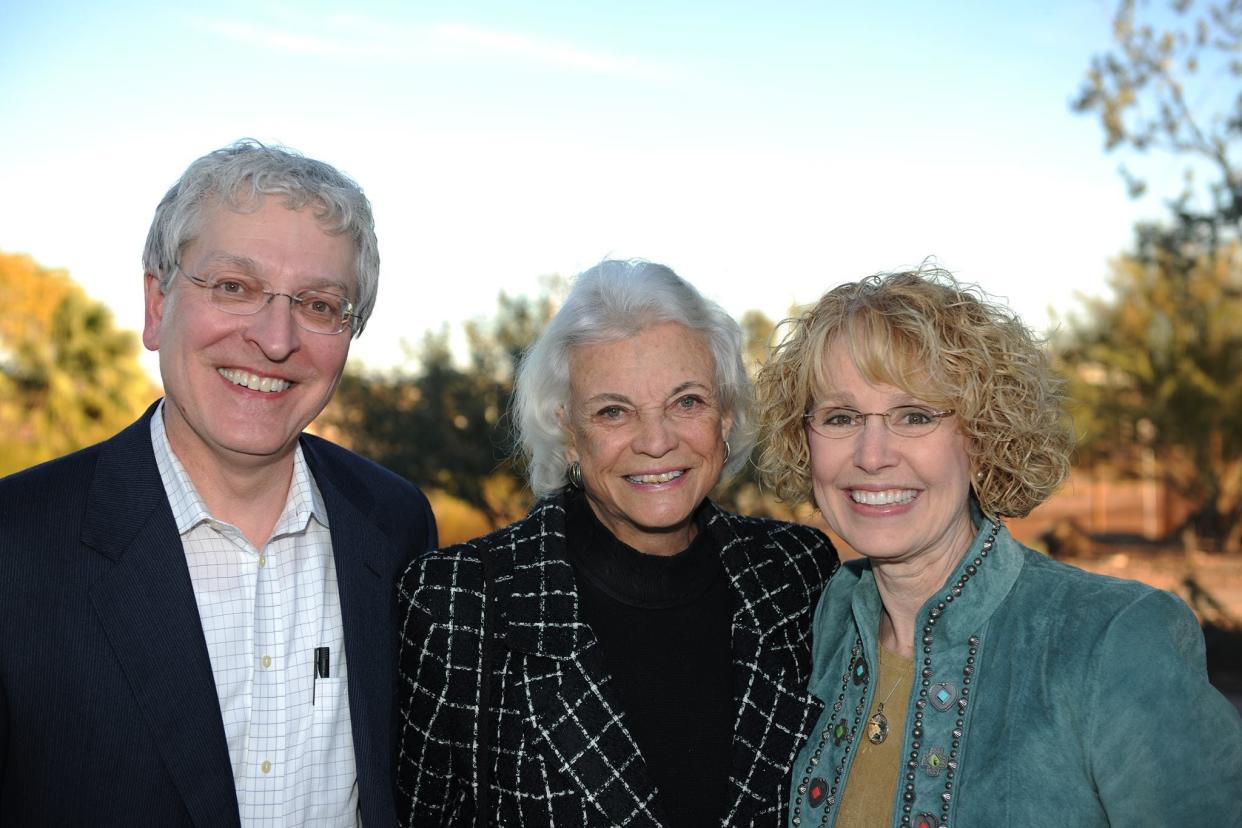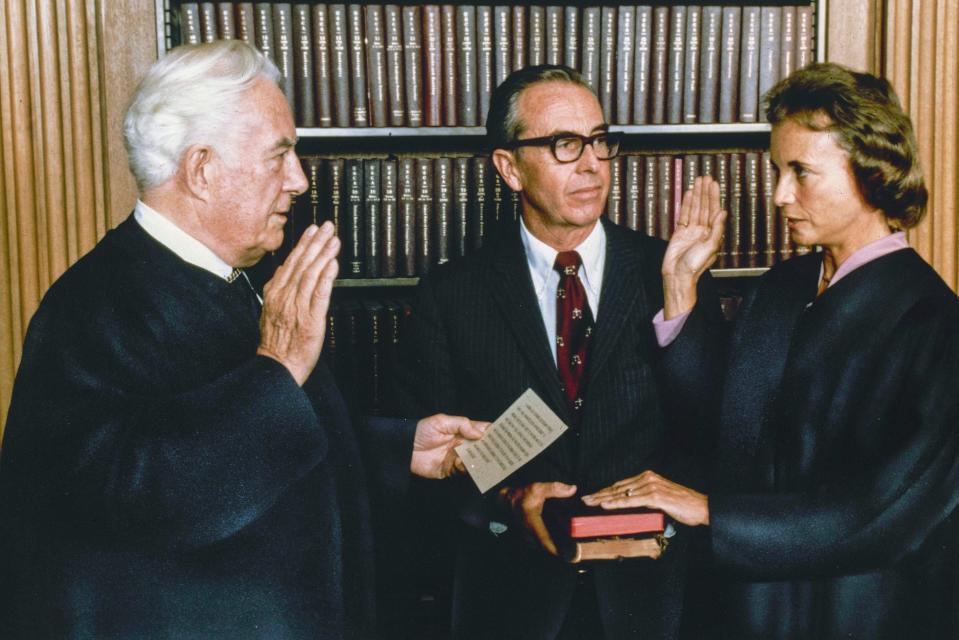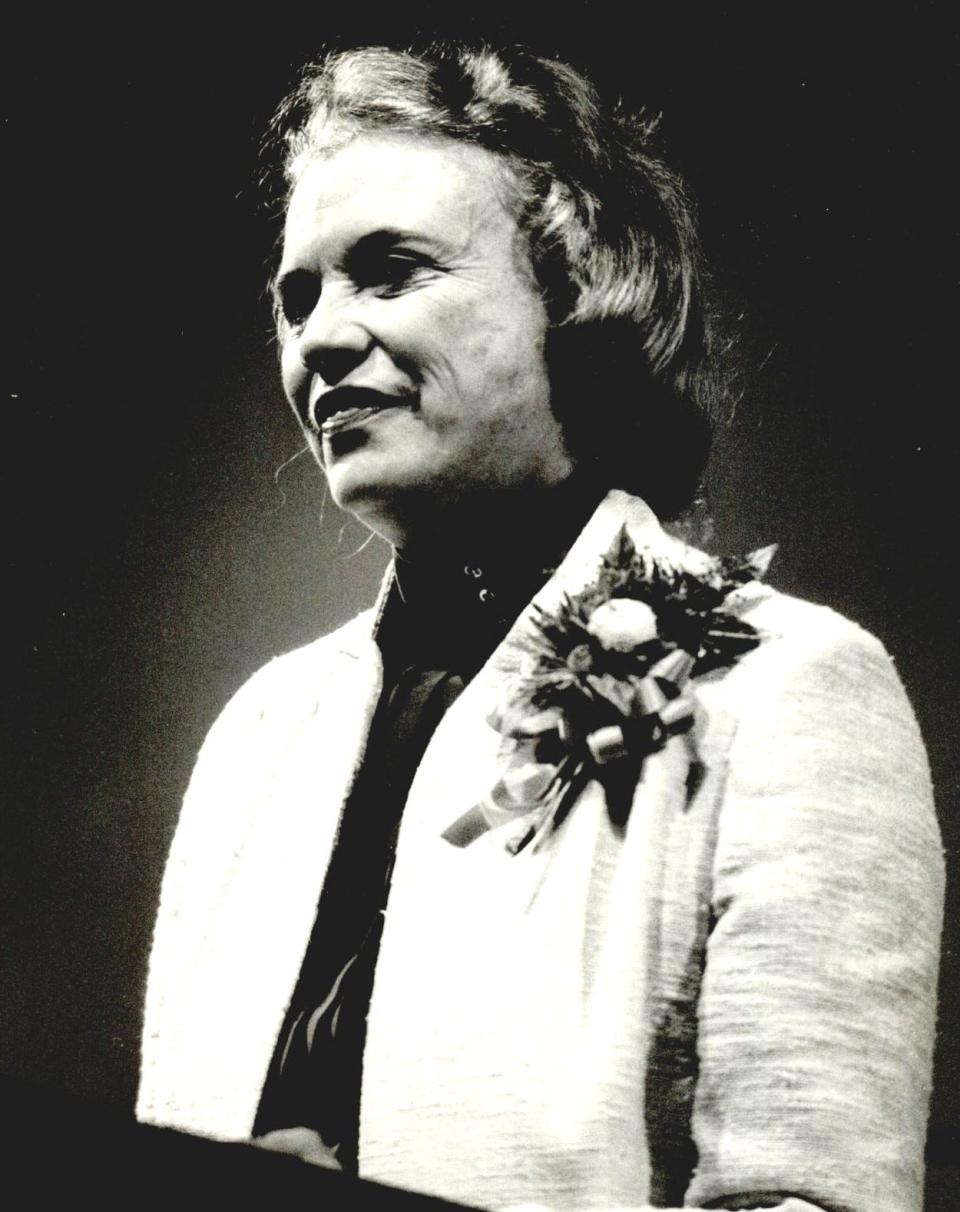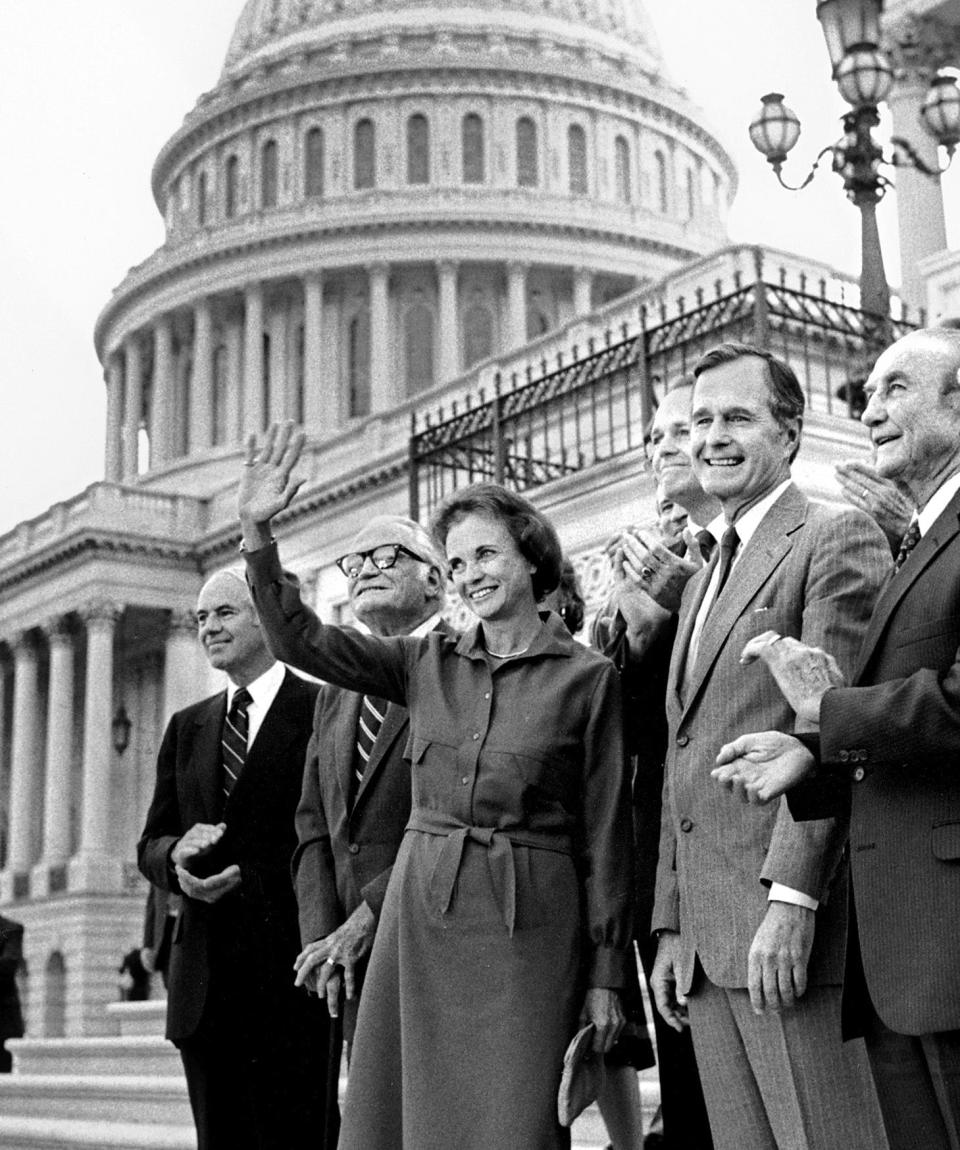Oklahoma friend: Sandra Day O'Connor's was a trailblazer who shattered tallest glass ceiling

Editor's note: Justice Sandra Day O'Connor, who was born March 26, 1930, died on Dec. 1, 2023.
Her biography, by best-selling author Evan Thomas, is titled, simply, "FIRST," and Sandra Day O'Connor represented many firsts in her storied life, the most famous being the first woman appointed to the U.S. Supreme Court. She would often note, that although it was great to be the first female justice, she surely didn’t want to be the last.
Yes, a lot did ride on President Ronald Reagan’s fulfilled campaign promise to appoint the first woman to the Supreme Court. There were several distinguished jurists considered for the job, and after making the cut to be interviewed, O’Connor journeyed to Washington to meet with President Reagan. She returned home, saying, “I will never get that job.“ She was wrong. That didn’t happen often.

Born on a cattle ranch in Arizona, Justice O’Connor would later immortalize her adventurous and often arduous childhood in her best-selling memoir, "LAZY B." In that book, deeply enjoyed by three generations of women in my family, she tells of many experiences as a young cowgirl. Everything in the desert had protective characteristics, she noted, “thorns, teeth, horns, poison, or perhaps, just being too tough to kill and eat.” One had to learn to be “careful and respectful.“ Perhaps these lessons helped her navigate the slings and arrows of her later Washington life.
I met Justice O’Connor courtesy of Oklahoma super lawyer Andy Coats when he was president of the American College of Trial Lawyers. A speaker scheduled for a college meeting in Florida became ill, and Andy invited me to fill in on a panel that included famed journalist Anthony Lewis, former New York Gov. Mario Cuomo and Justice O’Connor. She liked my presentation and came to talk to me after I had finished.
When Justice O’Connor later wrote all the chief judges of the U.S. circuit courts, asking them to name a judge from each circuit to serve on her committee to advise the American Society of International Law, my Chief Judge Stephanie Seymour selected me. It changed my life.
Shortly thereafter, my new friend, Justice O’Connor, invited my wife and me to accompany her with other judges on a judicial exchange to China. Subsequently, she invited me to attend the first Arab Judicial Forum, where 17 nations gathered to discuss the rule of law. Afterward, I served on a panel that spent a week working with Iraqi leaders on a proposed new constitution for Iraq.
Later, because of our experiences, I was named by Chief Justice William Rehnquist to chair the International Judicial Relations Committee of the U.S. Judiciary. The United States is a relatively young country, but it has the oldest independent judiciary in the world. Justice O’Connor was the most popular international judicial figure, and I was pleased to carry her briefcase to countries like Ukraine, the Czech Republic, Canada and many others.
A global judicial ambassador
Justice O’Connor represented the United States on the Foundation for the Future, a cooperative organization of American Allies in Europe and key nations in the Arab world. The foundation was established by the George W. Bush administration, and when she stepped down from that organization, she saw that I was appointed to succeed her. I had very tall high heels to fill, but I did my best.
After we both left the bench, she appointed me to the board of her newly conceived charitable organization, iCivics. She had decided to spend her retirement years teaching civic education and promoting civility and society. The country desperately needed both. It was a task, she said, that was even more important than her service on the Supreme Court.

Attraction to Oklahoma
Justice O’Connor loved Oklahoma. She made several appearances at our National Cowboy & Western Heritage Museum. She spoke at all our state law schools. She visited the Cherokee reservation, Red Earth and the Sovereignty Symposium. She conducted civic education seminars for Oklahoma teachers. Fortunately for my wife and me, she always stayed at our home when in Oklahoma. She graciously agreed to be my presenter when I was inducted into the Oklahoma Hall of Fame in 2008. At every step of the way with her, she enriched my life as she did with everyone she interacted with.
When she visited, times being what they were, she always had protection details from our excellent U.S. marshals. She was very popular with them, and as time went on, she ended up with a full detail of female marshals. A group of them created some T-shirts titled “Warrior Women,” and they presented Justice O’Connor one of the shirts.
Alas, dementia robbed us all of this amazing trailblazer. She finally required full-time care, and our times together came to an end. The last message I received from her daughter-in-law through my cousin, her friend, was that “the justice still enjoyed cowboy music and Mexican food.”

A legacy of service
Her legacy? There are many. A cancer survivor, she scheduled her exhausting chemotherapy sessions in off weeks for the court, never missing a single oral argument. As a justice, her carefully crafted opinions, narrowly written, solved the specific issues at hand, without being enslaved to some tenuous legal theory. The first female majority leader of a state Legislature, she had learned how to bring contentious groups together by having dinners at her home, featuring, you guessed it, Mexican food and beer. Her jurisprudence, one of modesty and pragmatism, is no longer in vogue. Too bad.
But most of all, her legacy is that of a trailblazer who shattered the tallest glass ceiling of them all by joining the court. Her appointment had received some vicious complaints and attacks to the effect that women could not handle the job. Those arguments are no longer made these days, and four very talented women sit on our nation's highest tribunal.
Sandra Day O’Connor was certainly the first, and she would be very pleased to note that she was not the last.
Robert H. Henry, now in private practice, has served as a member of the Oklahoma House of Representatives and was elected attorney general of Oklahoma in 1986 and 1990. Later, he was appointed to the U.S. Court of Appeals for the Tenth Circuit, where he served as chief judge until 2009. He became the 17th president of Oklahoma City University in July 2010, retiring from that post in 2018.
This article originally appeared on Oklahoman: Sandra Day O'Connor first woman on U.S. Supreme Court, but not the last

